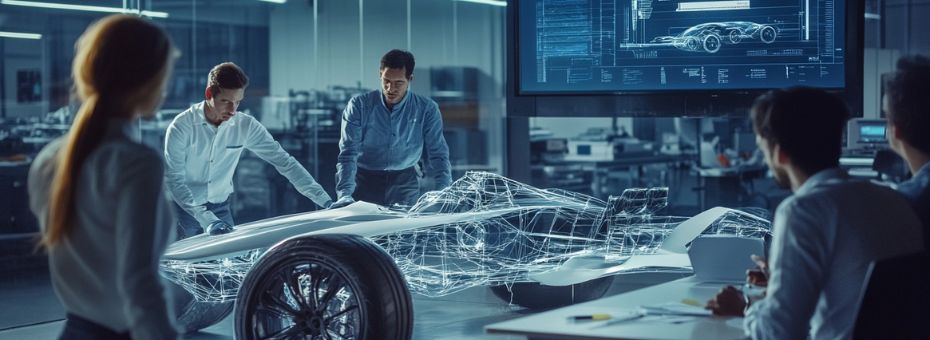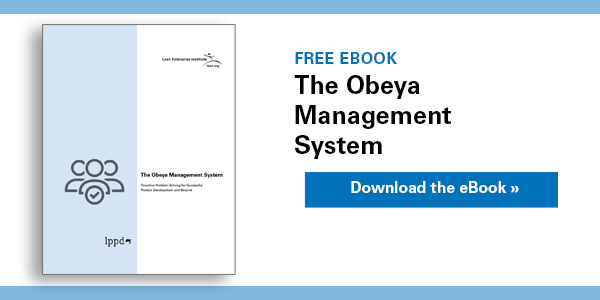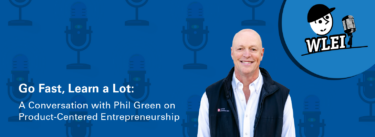Be among the first to get the latest insights from LEI’s Lean Product and Process Development (LPPD) thought leaders and practitioners. This article was delivered to subscribers of The Design Brief, LEI’s newsletter devoted to improving organizations’ innovation capability.
At Honda, the individual leading the development of a new product is known as the Large Project Leader, or more commonly in the industry, the Chief Engineer (CE). This role demands both strong leadership and technical skills, as the CE is the concept creator and overall decision maker—the big boss, so to speak. The CE role is widely recognized in the automotive and aircraft industries and is crucial in bringing new and exciting products to market.
I was the Chief Engineer for the 2019 Honda Passport, Honda’s first five-passenger mid-sized SUV to enter the U.S. market. I led a team that developed a widely popular vehicle, attracting new buyers to the Honda lineup by offering a roomy, off-road capable, and sporty driving experience. The Passport is perfectly suited for both off-road adventures in Yosemite Valley and a cocktail brunch with the boss.
The role is complex and challenging, yet immensely satisfying, especially when seeing vehicles on the road with happy customers. Among the many responsibilities of the chief engineer, here are a few key ones.
Be the voice of the customer
The chief engineer is unwaveringly customer-focused, always keeping the end customer’s needs and preferences at the forefront of the development process. They are dedicated to ensuring that the vehicle not only meets but exceeds customer expectations for quality, performance, and usability. This involves continuously seeking and incorporating target customer feedback, analyzing market trends, and making decisions with the customer’s satisfaction in mind.
I began my journey in understanding the Passport customer by exploring campgrounds, visiting dealers, and interviewing SUV buyers. My team developed SUV prototypes—one large suburban-style and one sporty mid-sized—and explored the value of each with different customer types. When it came time to create the vehicle concept, including its overall size, shape, and performance parameters, I could confidently do so as I had a strong, visceral understanding of what the Passport customer valued.
Set the vehicle-level objectives
At Honda, the CE operates within a matrix-style organization, leading a team that delivers to the CE but reports to managers within their own functional divisions. For this reason, the vehicle-level objectives must be crystal clear and widely shared throughout the organization via a concept paper. This enables the functional groups to work effectively without guessing the customer’s needs or the direction of the CE.
When I mentioned that the “Passport is perfectly suited for both off-road adventures in Yosemite Valley and a cocktail brunch with the boss,” it not only helped clarify the vehicle’s positioning but reflected the vehicle-level objectives understood across the organization. For instance, the chassis engineers considered these objectives to enhance ground clearance and incorporate uniquely tuned dampers compared to the Pilot. Similarly, the interior engineers provided an easy-to-clean yet highly appealing rear cabin material. Clear vehicle-level objectives allow functional groups to deeply consider their contributions and deliver their best work, minimizing conflict and the need for the CE to micromanage every decision.
Set value targets
The goal of the CE is to deliver exactly what the customer values and nothing more or less. Offering features, styling, and performance characteristics that the customer does not value can be counterproductive—more is not always better, as customers ultimately pay for these extras. During development, it’s common for people to develop favorites and for functional divisions to propose their latest-trend technologies, which can quickly lead to a vehicle with too many features. Once these features and performance parameters make it into the package, they are difficult to walk back. By setting clear value targets and prioritizing, the CE can ensure the vehicle delivers optimized value.
For example, during the early concept development for the Passport, one objective was to create a premium cargo-area experience. There was certainly no lack of good ideas on how to accomplish this. The team engaged in numerous roundtable discussions about options like fold-out tables, clam-shell folding rear doors, and gadget lighting, all of which came with premium price tags.
I felt that I hadn’t done a good enough job clarifying what a premium cargo-area experience actually meant—because I wasn’t sure myself. So, my ergonomics and interiors team and I went back to the gemba—a Japanese term for the actual spot where the customer finds value—and explored this topic more deeply.
During this investigation, it became clear that our customers’ top priorities were interior volume and under-floor hidden storage. The gizmos and gadgets were just icing on the cake. This insight allowed me to set precise value targets for the rear cargo area, balancing cost, functionality, and usability. For even more precision, my ergonomics team suggested we set a target for a cargo area large enough to accommodate a German Shepherd-sized dog cage and long enough to sleep in the back. As a result, the Honda Passport features the largest interior volume among 5-passenger mid-sized SUVs and offers the most useful under-floor storage space in its segment, all at a reasonable price.
• • •
Recently, I pulled up next to a Honda Passport in a Trader Joe’s parking lot and saw a young woman loading groceries into the back, which was packed with camping gear. Curious, I asked where she was headed. With a smile, she said she was “heading out west without an agenda,” excited for the adventure ahead. Meeting her and hearing her plans really highlighted the essence of what makes being a chief engineer so rewarding. It’s a role that combines technical expertise with visionary leadership, allowing one to work with talented teams to create products that truly resonate with customers. While it was the most challenging job of my career, it was also, hands-down, the most satisfying.
Download the latest issue of The Design Brief.
Designing the Future
An Introduction to Lean Product and Process Development.






